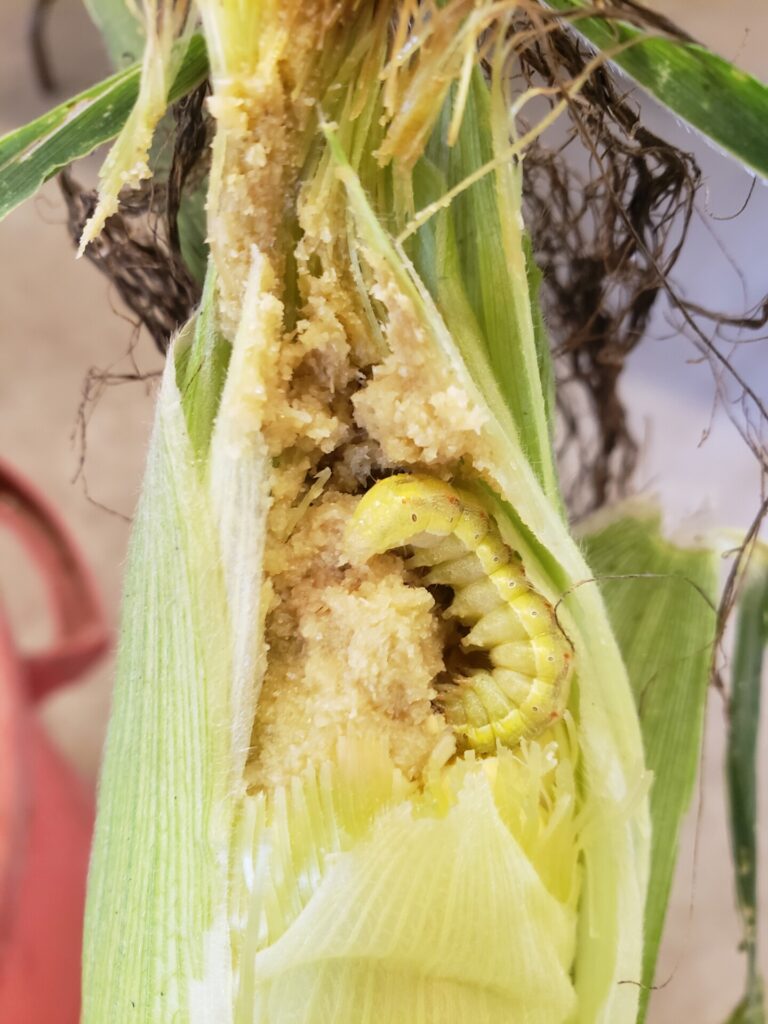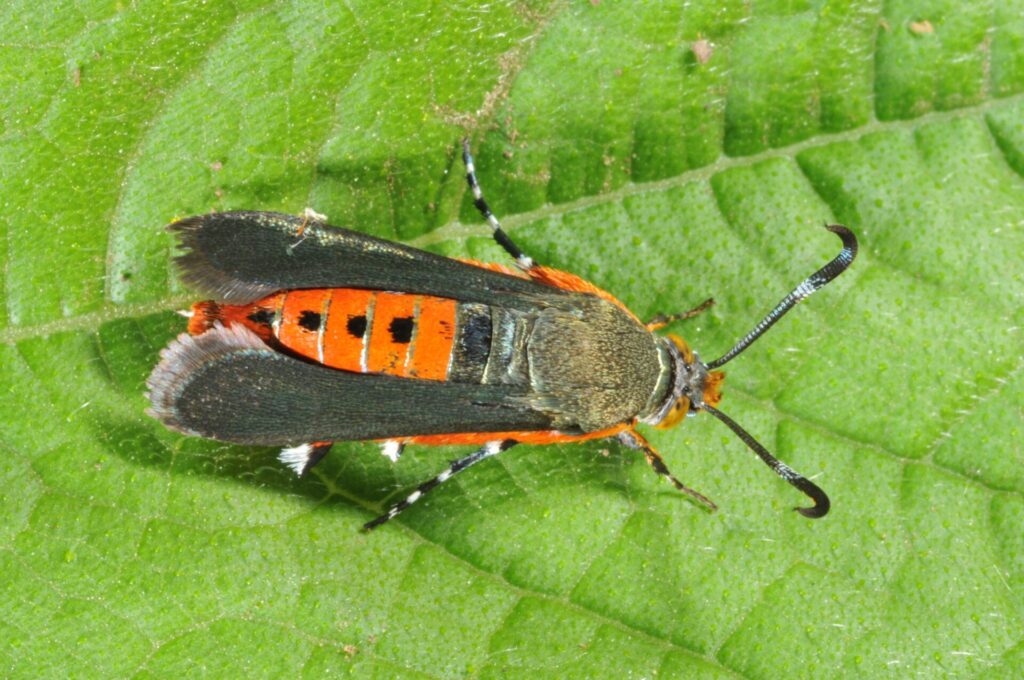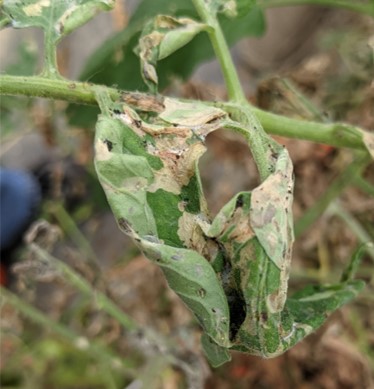I monitor three different insect pests with pheromone traps to help make informed decisions about when to spray insecticides or take other actions for management. Trap data can be found on the Extension Entomology Vegetables Website. The longest running is the corn earworm (Figure 1) trapping network. Participation in this network entails installing a cone-shaped trap near sweetcorn on your farm, deploying a pheromone lure, and checking the number of moths daily, preferably, or at least three times per week. The results of the moths caught in your trap can help time spray applications or even better, determine when they are not needed!
The squash vine borer (Figure 2) trapping network consists of a similar trap, placed lower to the ground near the crop canopy, and monitors for adult activity. Adult moths in the trap indicate mating and can help you time the application of insecticides during that crucial egg-hatch stage when they are most vulnerable.
Tomato pinworm (Figure 3) is the other insect we have begun monitoring in high tunnel tomato production and are interested in expanding to field systems. This network is in its infancy, and we are still trying to just get a handle on the biology of this insect, specifically where and when we find it in the landscape. This trap is different from the others in that it employs a sticky card that captures the insect. Reporting periods are less frequent and consist of you sending the actual card (or good pictures of it) to our lab for identification.
All of these systems utilize pheromones. For each, there is a lure, impregnated with the scent of a female of that particular species. Males are attracted to this scent to find a mate and navigate to the trap, where they either get physically stuck to a board or fly upwards and get stuck in a collection chamber. In participating, you are monitoring adult activity, which is a predictor of egg-laying in the crop in which they are caught. It is the larva in all cases that causes destruction to the crop.
If you look at the data online from last year, you will be able to get a sense of where we are missing collaborators throughout the state. I will provide the trapping supplies, given that you are committed to sharing what you catch with our database. It is a simple number entry in a shared Google sheet. If you are interested in participating in any of these networks, especially in regions where we do not have someone already participating, please email me at lingwell@purdue.edu.


